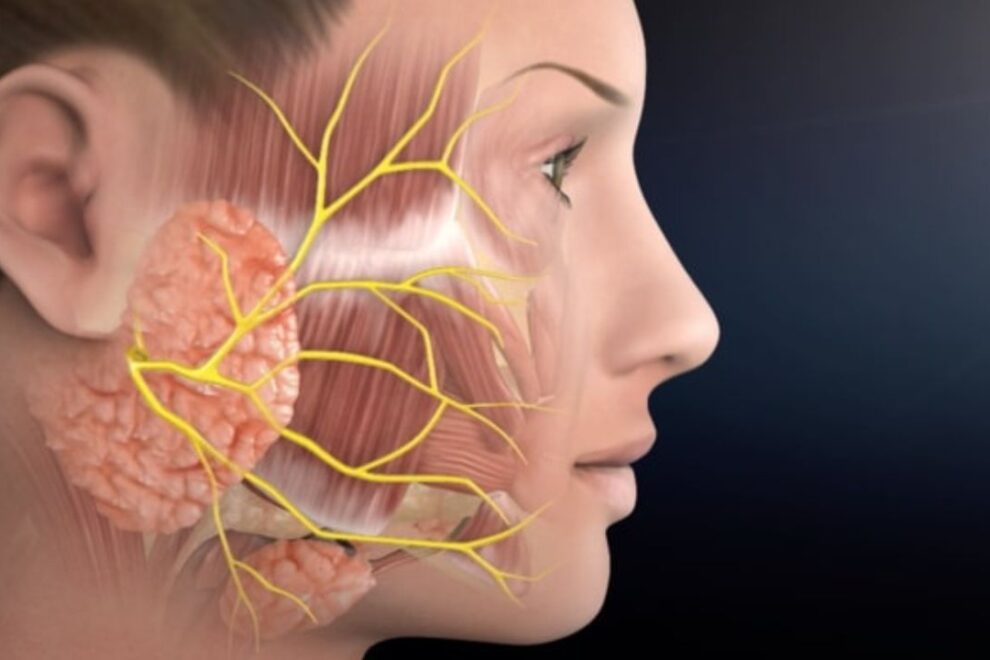Parotid Gland Removal – Parotidectomy in India: Safe & Effective Surgery
What Is It ?
The Parotid is a gland which makes saliva to wet the food in your mouth. It is shaped like a wedge and fits behind the back of your jawbone just in front of your ear. The saliva runs from the parotid gland along a tube which opens into your mouth near your back teeth.
The nerve to all your face muscles runs through the parotid gland and the nerve to the skin of your ear runs past the back of the parotid. If a swelling grows in the parotid gland, that part of the parotid has to be removed.


Free Doctor Opinion
Wish to know our ENT Surgery in India, send us your message – click here
Or email at [email protected] / Call +91 9029304141
What does the Operation involve ?
The treatment involves a general anaesthetic, which means you are going to be put to sleep completely.An incision (cut) will be made which runs from in front of your ear and down into your neck. This incision heals verywell indeed; the incision is nearly the same as the one used in “face lift” surgery, and in time the scar is likely to be minimal. Once the gland has been removed the incision is held together again with stitches. These need to be removed around a week after surgery. At the end of the operation the surgeon will place a drain (plastic tube) through the skin in order to prevent any blood clot collecting under the skin. Most patients will require 24 – 48 hours in hospital after the operation before the drain can be removed and they can go home.
If your gland is being removed because of infection that is caused by a stone, it may also be necessary to make a cut inside the mouth to remove that stone.
The Operation
You will have a general anaesthetic, and will be asleep for the whole operation. An S-shaped cut is made down the skin crease in front of your ear, under your ear lobe, and down on to the side of your neck. The swelling together with some of the parotid gland is cut out.A small plastic tube is placedin the wound called a drain. this is connected to a small bottle and stops blood collecting under the skin. The skin is closed up. The wound is designed to heal leaving only a faint scar.
Possible Complications
Most people have some numbness of the ear. This gets better over 2 to 3 months but may always be there slightly. Straight after the operation about 1 in 10 patients notices some weakness of the side of the mouth or some difficulty in closing the eye properly. This is caused by stretching or bruising of nerve fibres. Recovery takes an average of 2-4 months. Infection is an unusual problem and settles down with antibiotics in a week or two. Rarely there may be a little discharge of saliva through the wound for a week or two. This always gets better. Sometimes the skin over the temple sweats during a meal.
This is rarely troublesome, but can be treated. The swelling in the parotid will be examined under a microscope to find out the exact type. Sometimes x-ray treatment is needed after the operation. The results and any further treatment will be discussed with you. Occasionally swellings come back on the operated side or even appear on the opposite side. You will be examined from time to time after the operation to check for this.
There are a number of complications that are associated with parotidectomy. Facial nerve paralysis after minor surgery should be minimal. After major surgery, a graft is attempted to restore nerve function to facial muscles. Salivary fistulas can occur when saliva collects in the incision site or drains through the incision. Recurrence of cancer is the single most important consideration for patients who have undergone parotidectomy. Long-term survival rates are largely dependent on the tumor type and the stage of tumor development at the time of the operation.
Other risks include hematoma (collection of blood under the skin) and infection. The most common long-term complication of parotidectomy is redness and sweating in the cheek, known as Frey’s syndrome. Rarely, paralysis may extend throughout all the branches of the facial nervous system.
Wish to speak to us now? Send us a message and we will call you back –click here
Or email at [email protected] / Call +91 9029304141
Read Also :-
Committed To Build Positive, Safe, Patient Focused Care.
High Quality
Care
Home Review
Medicine
All Advanced
Equipment
Book An Appointment

At We Care India, we offer complete medical services for your entire family, from routine check-ups to injury care, ensuring personalized attention and expert assistance for all your health needs.


